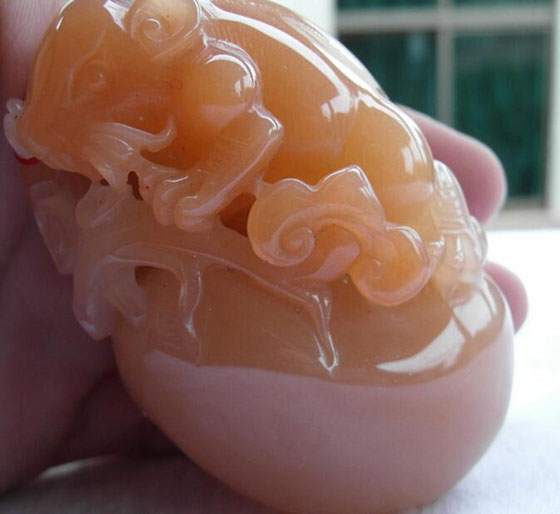Since ancient times, China has had the reputation of “the country of jadeâ€. The ancients regarded Yu Rubao as a treasure. Historical stories, myths and legends, folk customs, etc. will inject some soft power into a collection. The person who loves jade is not attracted by a variety of jade cultures for one reason, and the cultural meaning behind any type of jewelry is not a single one, but the result of the interaction of multiple cultures. Let's briefly talk about several traditional cultures that have a greater impact on jade. Imperial culture The emperors of China since ancient times have always had a unique end to the jade, so jade has become a unique collection of the Chinese nation different from other ethnic groups. In ancient China, the traditional virtues of gentlemen such as jade have been promoted. The gentleman culture is a unique culture in ancient China. Whether it is a literati or a nobleman, it is proud to call himself a gentleman. Since he is a gentleman, nature is a monarch, so " The gentleman culture can be said to be an extension of the emperor culture (so the gentleman culture is classified as a kind of emperor culture here). Qianlong and Cixi are two better spokesmen in the jewelry industry. Buddhist culture Buddhism was introduced to China from the time of the Han Dynasty. Although most of China is not a Buddhist, it is deeply influenced by Buddhism, and one of the most influential words is “Men Daiyin Dai Dai Buddha.†In addition, "Buddhist Qibao" has been repeatedly mentioned by many jewellery merchants. Although no one has a complete definition of Buddhism Qibao, "Buddhist Seven Treasures" has become a very popular collection in recent years. At the same time, it should be noted that the Buddhist culture in the collection cannot be simply equated with Buddhist culture. Many artistic concepts about Buddhist culture have been introduced into processing design, such as the Buddha, Guanyin, Artistic Landscape, and the monk. Peace culture Peace and wealth are the aspirations of every ordinary Chinese nation. The Chinese nation has always placed peace in front of wealth. In the past, many families have to hang a long life lock. The four emeralds in the jade world (nothing cards, safety buckles, bracelets, ring faces), among which the no-life cards, the safety buckles and the bracelets are all beautiful interpretations of the jewelry culture. In addition, the culture of peace also extends the blessing cultures such as Dailu’s quest for promotion, Dai’s seeking for wealth, wearing cinnabar for evil, and of course the ancient divination culture. In this article, all belong to the culture of peace, and some people call it “ Fu culture." Health culture The ancient medical book called "the beauty of jade stone, sweet and flat, non-toxic", and said that jade is a substance that is abundant in the human body. It is believed that jade contains jade, and it works synergistically with saliva. "Stop thirst, except for the heat in the stomach, the irritability of the stomach, the heart and lungs, the throat, and the hair." So jade is not only used as jewelry, decoration, decoration. It is also used for health and fitness. Since ancient times, the emperors of various emperors have not kept their jade, and the Song Huizong has become jade, and Yang Guiyu contains jade. Now people's lives have become more and more focused on self-cultivation, the pursuit of harmony between man and nature, a "people raise jade, jade raise people" that everyone has heard, this is a beautiful interpretation of this culture affecting jade collection hobbies. Because jade contains a variety of trace elements that are beneficial to the human body, it is said by traditional Chinese doctors that "some diseases can not be cured, and jade is often worn to cure diseases." If you wear a long-term benign massage of the jade bracelet, you can not only passively remove the blurred vision, but also save energy and spirit. Shaoxing Fangzhuo Textile Co.,Ltd , https://www.printblanket.com